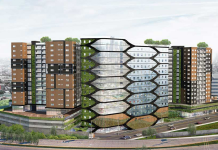The COVID-19 pandemic disrupted a period of strong demand and rising rental rates across the Philippine office market. However, landlords received some much needed good news when Colliers recently predicted a turnaround for segment would likely happen this year as part of the country’s expected economic recovery.
“The office, residential, retail and industrial sectors will benefit from a macroeconomic rebound. Landlords should prepare to capture pent-up demand while tenants and investors should maximize opportunities as the market is on its way to recovery,” Joey Roi Bondoc, Colliers Associate Director and Head of Research, said.
Colliers recorded 302,600 square meters of office deals during the first nine months of last year. This was a two percent increase from the same period in 2020. According to the consultancy, more than half of these transactions involved non–business process outsourcing companies.
Bondoc reported that Shopee, Chinabank, Grab Philippines, Asian Carmakers, Nu Skin Philippines and several logistics firms were among those to take up space in 2021. That being said, office vacancies still remain above pre-pandemic levels.
“Some occupiers continue to vacate office space in Metro Manila, Colliers retains its vacancy forecast of 15.6 percent by the end of 2021. Improvement in business sentiment in the next 12 months complemented by greater vaccination rates will likely lead to potential rebound in office space absorption in 2022,” Bondoc stated.
However, the Philippine office market must focus on creating sustainable spaces as this will help future proof commercial towers in 2022 and beyond.
“In our view, there will likely be a heightened preference for sustainable buildings that provide natural lighting and optimize air quality, among other features. Over the next 3 to 5 years, these features should result in utility and talent acquisition cost savings and contribute to healthier and more productive workforce,” Bondoc concluded.
Related: The office market in secondary cities of the Philippines may benefit from viral diversification





















